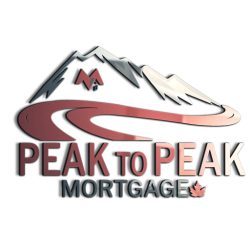The mortgage approval process has 5 fundamental stages: the collection of information, submission to the lender, appraisal, document review, and file complete. Each stage forms a critical part of the process and can have an impact on whether or not your financing is approved.
Please note that if you are looking for construction financing, the process is much more involved. See our information page on Construction Mortgages for more information.
The Collection of Information
During this stage, you have filled out an application, provided your consent to have your credit report accessed, and provided the relevant income and downpayment documents initially needed to give the lender (and/or broker) an idea of how you qualify. Many of these documents may have been provided at the time you arranged your pre-approval. If some time has lapsed since the initial pre-approval, the lender may ask you for a freshly dated employment letter and paystub to make sure your employment and income have not changed. If your qualifying income is based from your tax returns, the lender may also request the current year’s tax filing if your approval occurs after April 30th.
If you have an accepted offer, all of the associated purchase documents are also collected, such as: the Contract of Purchase and Sale, MLS listing, Property Condition Disclosure Statement, and relevant strata documentation.
Submission to the Lender
If you are working with a broker, the available lenders are reviewed and filtered. How this occurs is largely dependent on available rates, how you qualify, and the subject property details. Also of significance, are details such as how the title will be registered, and whether the property is owner occupied, rental, or a combination. All of these factors influence the potential lenders available to work with. These details may have already been determined to a certain degree at the pre-approval stage, but plans can change, so this is where working with a broker definitely works in your favour.
Also, it is during this time that if you are seeking high ratio approval, the lender will submit your file to one of the high ratio mortgage insurers, CMHC, Genworth, or Canada Guaranty.
Appraisal
Appraisals are not needed in all circumstances, but when they are, often the lender will require the appraisal to be orderded through an appraisal management portal. The property, access to the property, and lender details are input, and the appraisal request is submitted. It is important to know which lender you are working with because the lenders do not share their appraisals. If you are relying on a particular bank for an approval and you have to go to Plan B or C, your new lender may require a fresh appraisal through a different appraiser. In some situations, a lender might release their appraisal, but this takes time and it is quite often just faster and less conflicted to order a new one.
When is an appraisal not needed? Some lenders, and all of the insurers, have auto-valuation programs that assess the property and applicant information. If the information submitted meets their risk profile and assessment, an appraisal may not be necessary for the final approval.
Document Review
The document review process is also called Compliance. This can occur either before or after a mortgage commitment has been issued. This is when the lender will go through everything you have submitted and let you know if the documents have been accepted, or if there are additional documents needed. This is critical to know before you remove subjects. You need to be certain that you can produce every document the lender is requesting. If not, a different lender will have to be approached, or you will have to negotiate more time to track down your paperwork. This is why getting pre-approved in advance of writing an offer is extremley helpful. If you go through the pre-approval process, you will have a very good idea of the paperwork the lender is going to need once your deal is “live.” For more information on pre-approvals, click here.
Compliance can be the most cumbersome part of finalizng the approval. Sometimes, just when you think you couldn’t possibly provide more documents, they come back asking for one more…
File Complete
This is when you receive your final approval documents (or signing package) and the process is finalized to the point where your lawyer or notary takes over the closing process.
At this stage, all of othe supporting documents submitted to the lender & the appraisal have been signed off, and you’ve signed all of the required approval forms and disclosures. The lender confirms “file complete,” and the mortgage instructions are sent to your lawyer or notary. Some lenders also require a branch appointment before you sign with your lawyer or notary. You may have to attend one of the lender’s branches to show your ID in person and sign any additional miscellaneous branch forms.
Your lawyer or notary will prepare the mortgage & conveyance documents, and approximately 2 to 3 days before closing, you will make arrangements with them to sign. If you are purchasing, you will be required to bring in the balance of what is needed to complete the transaction by way of a bank draft or certified cheque, payable to the lawyer or notary “in trust.” The deposit that you gave your realtor at the time of subject removal, forms part of your downpayment. The balance of funds that you need to bring to your lawyer or notary’s office is usually comprised of (but not limited to): property transfer tax (if applicable), legal fees, the remainder of the downpayment, title insurance, and property tax & strata fee adjustments. For more information on closing costs, click here.
Your lawyer or notary will report back to you and your realtor to confirm completion, and you will then take possession of your new home.
Working with a mortgage professional that understands the process can save you time and money, and can help keep things organized from start to finish.
Feel free to email me with any questions: annie@peaktopeakmc.com.

